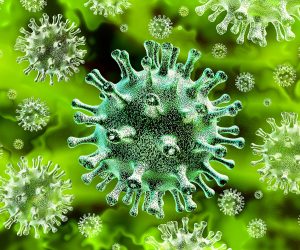In universities, companies, and government laboratories around the world, scientists are researching Pulsed Light. Try Googling the phrase “high-energy Pulsed Light” and you’ll be directed to hundreds of research studies and experiments. And most of these studies report the same findings: Pulsed Light is highly effective in application after application.
Pulsed Light has the unique ability to deliver high-energy full-spectrum light (just like the sun) without generating heat. This allows it to be used for everything from drying and curing sensitive materials, to sterilizing surfaces and decontaminating food. Much of recent research has been focused on Pulsed Light’s ability to destroy pathogens in a wide variety of settings. This has been known for years, but the pandemic spurred renewed interest.
One study published in Trends in Food Science & Technology concludes that Pulsed Light “has potential to cause first and second order technology disruption across many applications.” Could Pulsed Light be a disruptor in your market? Here’s a sampling of what the research says, with links if you want to read more:

“The results presented here demonstrate that broad-spectrum, pulsed UV light is an effective technology for the in vitro inactivation of SARS-CoV-2 on multiple surfaces.”
U.S. National Institutes of Health
“Pulsed ultraviolet (UV) light technology has emerged as a significant non-chemical and non-ionizing approach to decontaminate food products.”
Penn State University
“Overall, the [Pulsed Light] treatments (12–15 pulses) achieved a minimum four logarithmic reductions in the populations of all three microorganisms”
U.S. National Institutes of Health
“The results suggest that Pulsed Light technology could provide an effective alternative means of inactivating noroviruses in wastewaters, in clear beverages, in drinking water, or on food-handling surfaces in the presence or absence of biofilms.”
ASM Journals
“Pulsed Light inactivates bacteria and Aspergillus niger spores spread on surfaces. Several log reductions are obtained with one light pulse.”
International Journal of Food Microbiology
“We investigated the killing effect of Pulsed Light against foodborne pathogens. This new sterilizing method was found to be very effective, having high efficiency combined with a very short treatment time period.”
Food & Agriculture Organization of the United Nations
“[Pulsed Light] technology has the potential to achieve significant—equal or greater—microbial reductions than some currently available technologies.”
Penn State University
“Results from this study showcased the effectiveness of [Pulsed UV] treatment for reducing Salmonella level on black peppercorns surface and provided insights on the potential implementation of [Pulsed UV] treatment at the industrial level.”
Journal of Food Science
“(Pulsed Light) can improve…shelf life without significantly affecting the quality and bioactive compounds of strawberries.”
National Library of Medicine
“Compared to other sterilization methods, such as heat or chemical disinfectant treatment, Pulsed Light treatment has several advantages; it is faster and leaves no residues.”
Food Packaging & Shelf Life
“Pulsed Light is also an effective alternative to the chemical sterilants frequently used for treating food packaging materials, as it does not produce chemical residues.”
Food Safety Magazine
As you can see, if you are involved in public health, food processing, safety, medicine, public transportation, or pharmaceuticals — to name just a few — Pulsed Light could be the disruptive technology you’re looking for.

The research is clear: Pulsed Light has been proven effective for a wide range of applications. If there’s an application that you’d like to investigate, XENON’s scientists and engineers are ready to work with you to disrupt your market. Contact us here to learn more.
